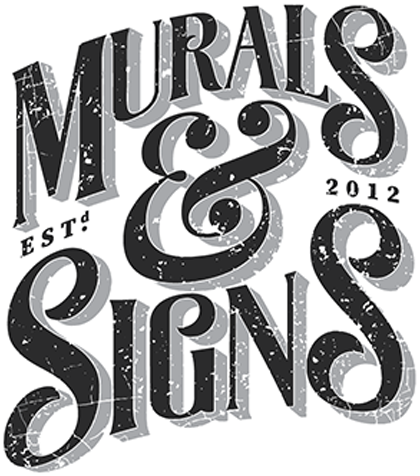When it comes to sign painting, safety should always be a top priority. The Occupational Safety and Health Administration (OSHA) provides guidelines and regulations to ensure the well-being of workers engaged in various industries, including sign painting. This comprehensive guide explores key OSHA regulations that are essential for maintaining a safe working environment in sign painting projects.
Understanding OSHA and its Importance
The Occupational Safety and Health Administration (OSHA) is a federal agency under the United States Department of Labor. Its primary mission is to ensure safe and healthy working conditions for employees across different industries.
The Role of OSHA in Sign Painting
In the context of sign painting, OSHA plays a critical role in establishing safety standards that protect workers from hazards associated with paints, solvents, equipment, and the work environment. Adhering to OSHA regulations not only safeguards workers but also minimizes the risk of accidents and injuries.
OSHA Compliance Benefits
Compliance with OSHA regulations offers several benefits to both employers and employees. It reduces the likelihood of workplace accidents, improves employee morale, lowers insurance costs, and helps businesses avoid costly fines and penalties.
Key OSHA Regulations for Sign Painting Safety
Sign painting involves various tasks and potential hazards, and OSHA regulations address these to ensure safe working conditions. Here are some essential regulations to consider.
Hazard Communication (HazCom) Standard (29 CFR 1910.1200)
The Hazard Communication Standard mandates that employers provide information about hazardous chemicals to their employees through labels, safety data sheets (SDS), and proper training. For sign painters, this means ensuring that all paints, solvents, and chemicals used are properly labeled, and employees are educated about their potential hazards and safe handling procedures.
Respiratory Protection (29 CFR 1910.134)
This regulation outlines requirements for the use of respiratory protection when employees are exposed to harmful airborne contaminants. Sign painters working with paints and solvents that emit fumes should use appropriate respiratory protection, such as masks with the appropriate filters, to prevent inhalation of hazardous substances.
Personal Protective Equipment (PPE) (29 CFR 1910.132)
The PPE standard mandates that employers assess potential workplace hazards and provide appropriate personal protective equipment to employees. Sign painters must wear PPE such as eye protection (goggles), hand protection (gloves), and proper clothing to prevent exposure to hazardous materials.
Hazardous Waste Operations and Emergency Response (HAZWOPER) Standard (29 CFR 1910.120)
Sign painting projects might involve the use of hazardous substances that generate waste. The HAZWOPER standard sets guidelines for handling hazardous waste and responding to emergencies. It’s crucial to properly store, label, and dispose of hazardous waste generated during sign painting.
Electrical Safety (29 CFR 1910 Subpart S)
Electrical safety is paramount when using tools and equipment in sign painting projects. Adhering to OSHA’s electrical safety standards prevents electrical hazards, such as electrocution and fires, while working with electrical equipment.
Compliance Tips for Sign Painting Safety
Adhering to OSHA regulations requires proactive measures to ensure a safe working environment for sign painters.
Training and Education
Ensure that all employees involved in sign painting projects receive proper training and education on OSHA regulations, hazardous material handling, and safety procedures. Well-informed workers are more likely to adhere to safety protocols.
Hazard Assessment
Conduct a thorough hazard assessment before each sign painting project. Identify potential risks, such as chemical exposure, electrical hazards, and fall risks. Implement measures to mitigate these risks and provide necessary safety equipment.
Proper Equipment Maintenance
Regularly inspect and maintain equipment used in sign painting projects. This includes paint sprayers, ladders, scaffolding, and electrical tools. Well-maintained equipment reduces the risk of accidents due to equipment malfunction.
Emergency Response Plan
Have an emergency response plan in place in case of accidents, chemical spills, or other unforeseen incidents. Ensure that employees know the procedures to follow in case of emergencies and have access to appropriate emergency equipment.
Ongoing Compliance and Enforcement
Maintaining OSHA compliance is an ongoing effort that requires continuous vigilance.
Regular Audits and Inspections
Conduct regular audits and inspections of your sign painting work areas to identify and address potential safety violations. Promptly rectify any issues to prevent accidents and maintain compliance.
Reporting and Recordkeeping
OSHA mandates that certain workplace injuries, illnesses, and incidents be reported to the agency. Maintain accurate records of any incidents or near misses and submit the required reports as necessary.
OSHA Inspections
Be prepared for OSHA inspections, which can occur randomly or in response to complaints or incidents. Having a comprehensive safety program, well-trained employees, and proper documentation can help streamline the inspection process.
Conclusion
Prioritizing safety in sign painting projects is not only a legal obligation but also a moral responsibility. OSHA regulations provide a comprehensive framework for creating a safe working environment that protects sign painters from potential hazards. By understanding and adhering to OSHA standards, businesses can ensure the well-being of their employees while promoting a culture of safety. Remember, OSHA compliance is a continuous commitment that requires ongoing education, proactive measures, and a dedication to maintaining a safe and secure workplace for everyone involved in sign painting projects.
